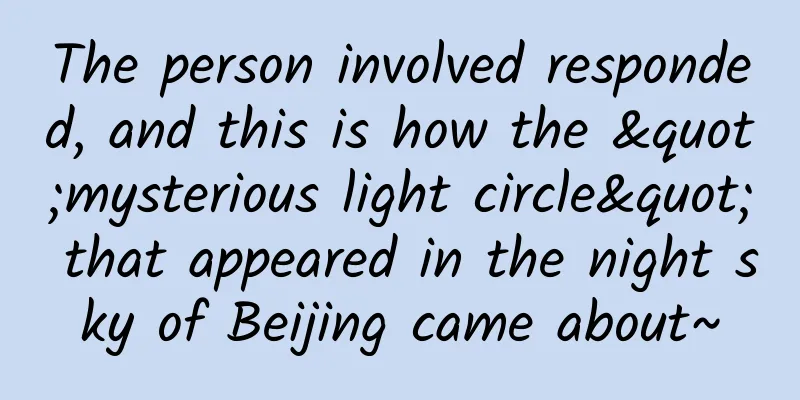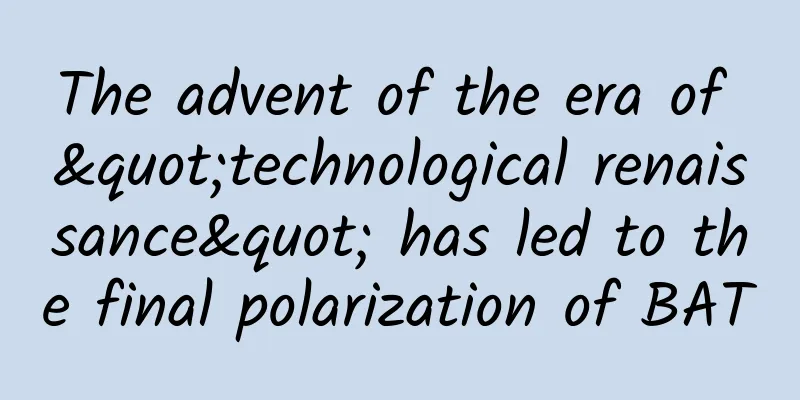The person involved responded, and this is how the "mysterious light circle" that appeared in the night sky of Beijing came about~

|
Sha Xiaolan, lighting director of the opening and closing ceremonies of the Beijing Winter Olympics and Paralympics, responded that the "mysterious aperture" on the night of the 11th was actually the effect of the beam lights on the top of the Bird's Nest. What are the scientific principles behind it? Let's take a look at the interpretation. On the evening of March 11, a mysterious halo appeared in the sky over Beijing. The citizens who didn't know what was going on were confused: What's going on?! A natural phenomenon? An alien spaceship? ... Who can give a reasonable explanation? The truth is - the rehearsal site of the closing ceremony of the Winter Paralympics! According to @中国天气, the aperture is actually formed by the lights of the Bird's Nest hitting the clouds. ◈ ◈ ◈ How is the “mysterious aperture” formed? Meteorological experts stated that because it was cloudy on March 11, the clouds were thick and had a high reflectivity, and the strong light from the ground shone into the sky and hit the clouds, causing this "phenomenon." Sha Xiaolan, lighting director of the opening and closing ceremonies of the Beijing Winter Olympics and Paralympics: We used a circular visual symbol with a diameter of about 55 meters at the main venue of the Bird's Nest. I believe everyone has also discovered when watching, including our lighting design, this main visual image runs through the entire process. The "mysterious light ring" on the night of the 11th was actually the effect of the beam lights on the top of the Bird's Nest. Through the design of 240 beam lights, "concentric circles" were presented with light. We hope to retain the memory of the "double Olympic city" in this way. The so-called "aperture phenomenon" was mainly because the clouds were relatively thick and humid that night, the light reflectivity was high, and the strong light from the ground shone into the sky and hit the clouds, creating an aperture visible to the naked eye. At the same time, if you look from other angles, you can also see the cone-shaped light column formed by the lights of the Bird's Nest shining into the sky. This is actually what we often call the Tyndall effect. We know that light travels in a straight line, and vision is a process in which light is reflected from an object to a person's eyes. If the light is not reflected or scattered to our eyes, we cannot see the object formed. But if there are moderate-sized particles suspended in the air, such as in foggy or rainy days, they will form colloids. When light passes through such air, the Tyndall effect gives the light a shape, which is also the effect of the light beams above the Bird's Nest. For example, we use smoke machines to make the lighting effect more prominent during performances, which is the same principle. Similarly, when the weather is clear, the light will not be reflected back when it shines into the sky, and there will be no way to form an aperture. In fact, we have been testing for nearly half a year, and similar weather conditions have not appeared in several rehearsals and the opening night, so it was not discovered by everyone. It was also a very precious coincidence that it could be presented before the final performance. ◈ ◈ ◈ Tyndall Effect - The "Jesus Light" of Photography So, what is the Tyndall effect? What is its principle? The "Tyndall effect", also known as the "Jesus light" in the photography world, refers to the phenomenon that when a beam of light passes through a colloid, a bright "light path" can be observed from the side of the incident light direction. It is also called the light scattering phenomenon or opalescence phenomenon. Specifically, light can propagate in air or water, but when it propagates in pure air or pure water, the propagation path of light cannot be seen from the side. Once the air and water are impure, we can see the path of light. The wavelength range of visible light is 400nm~700nm. When there are particles in the air or water whose diameter is much larger than the wavelength, light reflection will occur and we can see these particles. When the diameter of suspended particles is smaller than the wavelength, between 1nm~100nm, it is not reflection but scattering, that is, the electromagnetic wave of the incident light forces the electrons in the particles to vibrate at the same frequency as the incident light wave, causing the particles themselves to emit light waves of the same frequency as the incident light in all directions like a new light source. As a result of scattering, most of the light can be transmitted, but a bright "pathway" can also be seen from the side. A dispersed system that meets this Tyndall scattering condition is called a colloid. It is worth mentioning that the solute in the solution exists in the form of molecules or ions with a diameter less than 1nm, so the solution will not have the Tyndall effect. Therefore, the Tyndall effect is a commonly used physical method to distinguish colloids from solutions. On the evening of March 11, when the strong light from the rehearsal of the closing ceremony of the Winter Paralympic Games "passed by" the fog or dust in the air and was projected over the city, encountering thick clouds, it formed the so-called "mysterious halo" that everyone saw. ◈ ◈ ◈ The Tyndall Effect in Life In the early morning, in the dense woods, you can often see beams of light shining through the branches and leaves. This natural phenomenon is also called the Tyndall effect. Source: Tuchong Creative This is because, due to the lower temperature at night, water vapor condenses into water droplets after contacting with dust in the air. In the morning, the air forms a colloid-like substance (if more water vapor condenses, fog is formed, and fog is obviously a colloid). Combined with the dust in the air, it is easy to form the Tyndall effect when exposed to sunlight. Therefore, clouds, fog, and smoke are also colloids, but the dispersant of these colloids is air, and the dispersed medium is tiny dust or droplets. Jesus Light Source: Tuchong Creative The formation of the Jesus light, or Tyndall effect, is based on the fog or dust in the atmosphere. When the sun shines down and projects on it, the lines of light can be clearly seen. In addition, the sun is a large area of light, so what is projected down is not just a little bit, but a whole magnificent picture. This kind of light brings a sacred sense of tranquility to the scenery. (Source: Comprehensive from People's Daily, WeChat official account "Physics Master Wang", Beijing Daily, Economic Information Network) Produced by: Science Central Kitchen Produced by: Beijing Science and Technology News | Beijing Science and Technology Media Welcome to share to your circle of friends |
<<: Let’s celebrate the birthday of “π” together on March 14! How much do you know about pi?
Recommend
How can I improve the rating of my Kuaishou store? How to improve the rating of Kuaishou store
This article mainly introduces how to improve the...
12-inch iPad Pro is coming soon!
A foreign Apple device hacker named Steve TS disc...
Shengfan practical 81 side jobs to make money: a series of courses on drainage, easily earning tens of thousands per month
Course Catalog: The 81 practical lessons of Sheng...
The GuangDianTong delivery guide for the education industry optimizes the entire process!
Among the current mainstream information flow cha...
How to write an excellent marketing promotion plan?
Making plans is one of the daily tasks of markete...
Ancient discovery: Adding legs to a snake?! Why did snakes lose their limbs?
Xinhua News Agency, Nanjing, January 27 , titled:...
What computer technology skills do programmers have that would amaze non-programmers?
[[141042]] Original question: What computer techn...
Samsung almost sold you the Note7 that was saved from the explosion. Will it be the next HTC?
With the official launch of Samsung's new fla...
Pinduoduo's operation ideas for new stores
Now with the development of the Pinduoduo market ...
A survey on the effectiveness of Toutiao CPA shows that 90% of people ignore this issue!
A friend complains every time he meets her: "...
From VR to TV games, neglected offline channels are experiencing a new lease of life
"It doesn't seem like a quick way to pro...
How to attract users through business?
Most operational work is generated with the Inter...
How to place advertisements on Zhihu? Give you a promotion secret!
Let me share it with you today! During the delive...
Best Practices for Customizing Android BaseAdapter
Although many new projects are using RecyclerView...
The secret that Leeuwenhoek guarded so closely was finally revealed by scientists: That’s it?
In the 17th century, Dutch businessman Antonie va...









